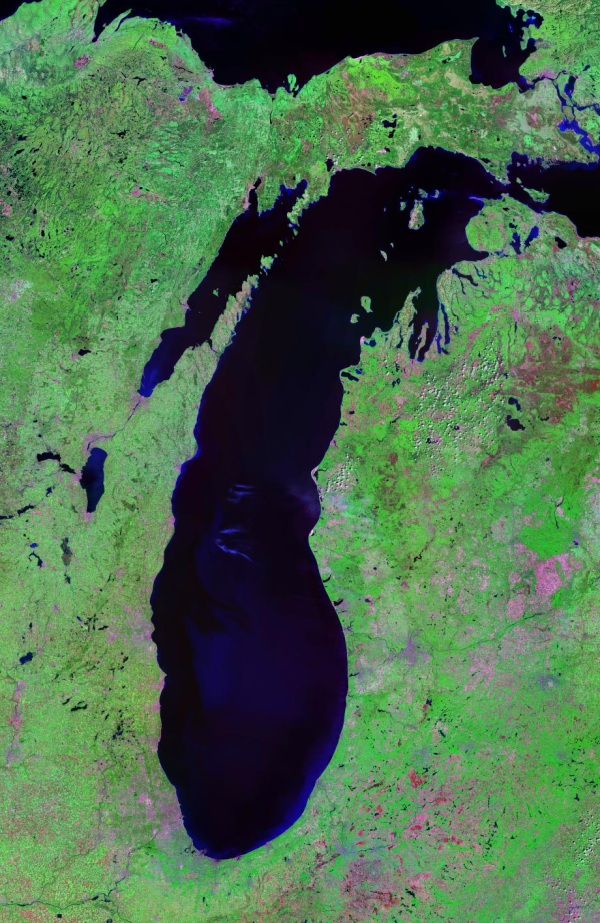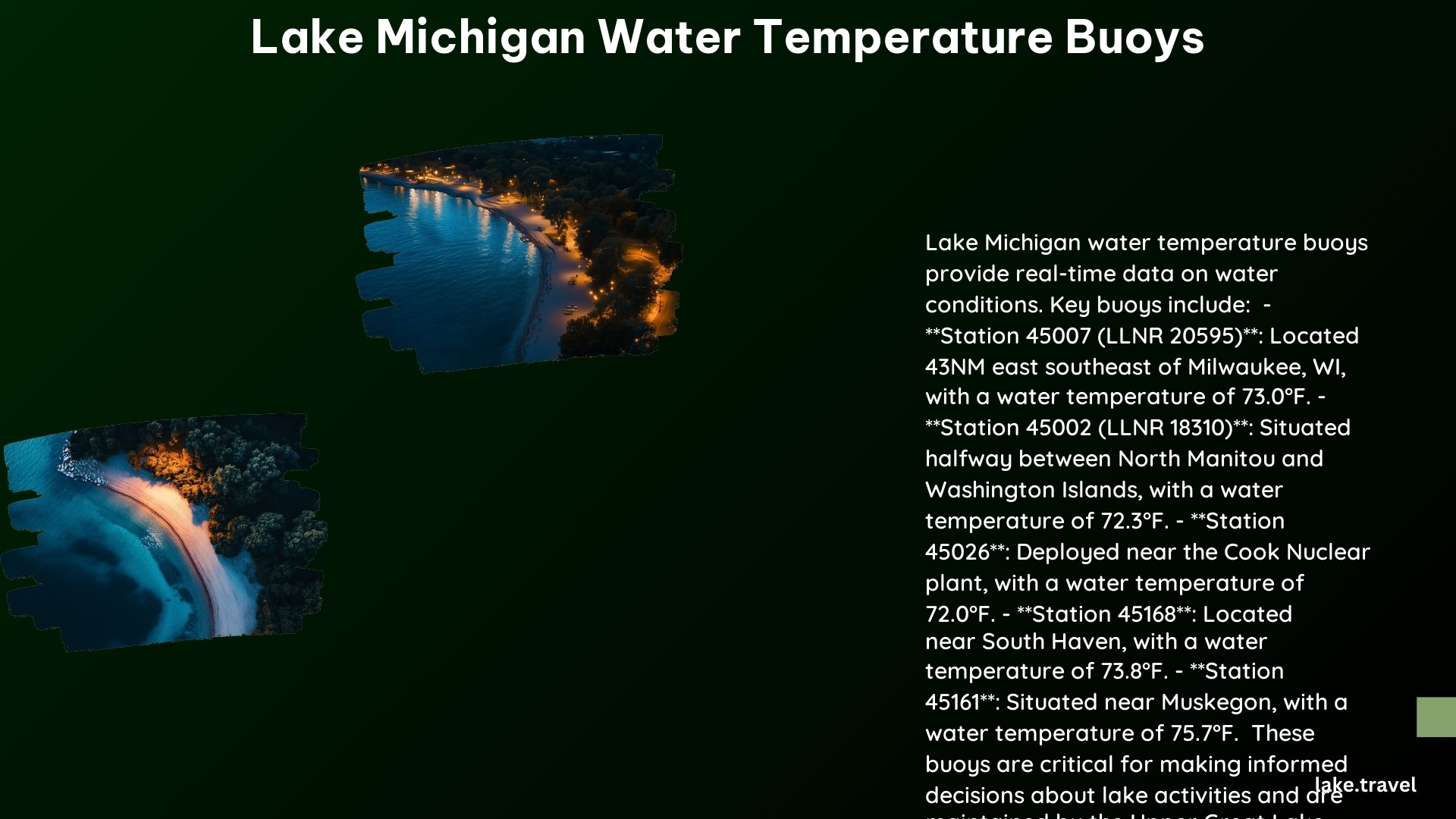Lake Michigan water temperature buoys are an essential part of the Upper Great Lake Observing System (UGLOS), providing critical data on water conditions and weather patterns. These buoys are strategically placed throughout the lake, collecting valuable information that helps researchers, beachgoers, and others make informed decisions about their interactions with the Great Lakes.
Locations and Stations

The Lake Michigan water temperature buoy network consists of several key stations:
- Station 45007 (LLNR 20595) – SOUTH MICHIGAN: Located 43 nautical miles east-southeast of Milwaukee, WI, at 42.674°N 87.026°W.
- Station 45002 (LLNR 18310) – NORTH MICHIGAN: Situated halfway between North Manitou and Washington Islands at 45.344°N 86.411°W.
- Station 45026 – Cook Nuclear Plant: Deployed in 2011 through a partnership with LimnoTech Inc. and designed by the University of Michigan’s Ocean Engineering Laboratory.
- Station 45168 – South Haven: Located near the South Haven pier and occasionally run over by boats.
- Station 45161 – Muskegon: Provides data on water temperature and other conditions.
Data and Measurements

The Lake Michigan water temperature buoys collect a wealth of data, including:
- Water Temperature: Buoys measure water temperature, which is crucial for understanding lake dynamics and predicting weather patterns.
- Wind Speed and Direction: Buoys record wind speed, direction, and gusts, helping in predicting weather conditions.
- Wave Height and Period: Data on wave height and period are collected to understand lake conditions and potential hazards.
- Air Temperature and Pressure: Buoys measure air temperature and pressure, providing a comprehensive picture of weather conditions.
Accessing Data
The data collected by the Lake Michigan water temperature buoys is readily available to the public:
- Real-Time Data: Data is available in tabular form for the last 45 days.
- Historical Data: Quality-controlled data for prior months and years can be accessed.
- Texting Service: Text the station ID to (734) 418-7299 to receive the latest observation on the go.
Importance and Impact
The Lake Michigan water temperature buoys play a crucial role in various aspects of the Great Lakes region:
- Weather Forecasting: Data from buoys helps in predicting weather patterns, including storms and temperature changes.
- Lake Management: Buoys provide critical information for lake management, including water treatment and beach safety.
- Research and Decision-Making: Data from buoys is essential for researchers, beachgoers, anglers, and others to make informed decisions about their interaction with the lakes.
Maintenance and Deployment
The Lake Michigan water temperature buoys are carefully maintained and deployed to ensure their continued operation:
- Seasonal Deployment: Buoys are deployed in the spring and recovered in the fall to avoid winter damage.
- Maintenance Reports: Weekly status and maintenance reports are available to ensure the buoys are functioning correctly.
Additional Resources
For those interested in learning more about the Lake Michigan water temperature buoys, there are several valuable resources available:
- National Data Buoy Center (NDBC): Provides hourly observations from a network of buoys and coastal marine automated network (C-MAN) stations.
- Great Lakes Observing System (GLOS): Offers information on buoys and their role in the Great Lakes observing network.
The Lake Michigan water temperature buoys are a vital component of the Upper Great Lake Observing System, providing essential data that helps researchers, forecasters, and the public better understand and interact with the Great Lakes. By monitoring the pulse of Lake Michigan, these buoys play a crucial role in the stewardship and management of this vital natural resource.
References
National Data Buoy Center. (n.d.). Station 45007 Recent Data. Retrieved from https://www.ndbc.noaa.gov/station_page.php?station=45007
USCG Auxiliary. (n.d.). Buoys in Lake Michigan. Retrieved from https://wow.uscgaux.info/content.php?category=buoys&unit=095-33-10
Tawas Bay Weather Station. (n.d.). Lake Michigan Buoys. Retrieved from https://www.tawasbayweather.com/buoys/buoysLM.php
National Weather Service. (n.d.). Lake Michigan Buoy Observations and Forecasts. Retrieved from https://www.weather.gov/lot/lake-michigan-buoy-conditions
Great Lakes Observing System. (n.d.). Buoys. Retrieved from https://glos.org/observing/buoys/.
